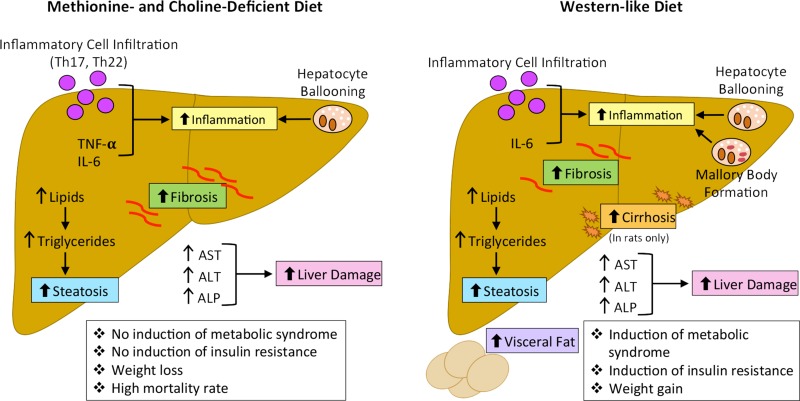Figure 3.
The main mechanisms regulating pathogenesis of NAFLD and NASH with fibrosis in the MCD and Western-like diet (WD) animal models are depicted. Following MCD feeding for various times, it has been shown that mice had increased steatosis, inflammation, hepatic fibrosis, and liver damage, which mimic human NASH pathogenesis. However, mice fed the MCD diet did not develop metabolic syndrome or insulin resistance and showed weight loss and increased mortality, which are not similar to the human NASH phenotype. Following feeding of WD in mice, of varying compositions and durations, it is mainly noted that mice had increased steatosis, inflammation, fibrosis, liver damage, visceral fat formation, metabolic syndrome, insulin resistance, and weight gain, all of which closely mimic the pathogenesis of human NASH. Further, the development of cirrhosis has been shown in rats fed WD, which mimics complications associated with end-stage human NASH disease.

